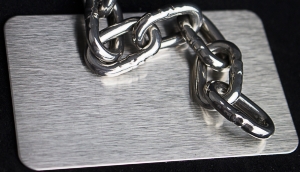Influence of the surface roughness in some of the main applications of stainless steels
The use of stainless steels is essential in a number of industrial processes involving aggressive chemical agents that limit greatly the durability of other materials. It is important in each case the selection of the most suitable type of alloy, with a good balance between cost and the required durability. Proper selection of the type of stainless steel ensures a long service life of manufactured equipment and products, even keeping a perfect aesthetic appearance when necessary.
Another of the most important aspects of material selection, is the type of finish and surface roughness, it is a factor that often has great influence on the good results of the elements made of stainless steel in some major applications.
FOOD & BEVERAGE INDUSTRY
Production lines, containers, pipes or equipment, in direct contact with food and beverages are manufactured in stainless steels generally, and in many countries is a mandatory requirement regulated by food legislation.
Stainless steels are inert materials which more than meet the requirements of existing regulations on permissible limits of transfer of trace metals that could happen to food, thereby ensuring no change in security and food properties, and guaranteeing the healthiness in all processes of preparation.
Cleaning of stainless steel in the food industry of equipment involved in the production, is a very important maintenance requirement that always depends on the nature of the processes, types of food, deposits that form, and the hygiene requirements, to choose the most suitable cleaning method.
Cleaning procedures stainless steel in the food industry are varied, from the application of water and steam, detergents or organic solvents and the use of alkaline solutions or nitric acids.
To avoid withholding of the food and the formation of deposits, which could cause the growth of bacteria, and in some cases causing corrosion and making easy the cleaning of equipment, it´s a key factor the selection of a type of finish with a low roughness? Normally industrial finishes are used, as 2B or BA finishes.
INFLUENCE OF ROUGHNESS IN FRICTION AND WEAR
The science that studies friction, wear and lubrication taking place during contact between solid surfaces in motion is called tribology, and it is very important to study different alternative types of finishes of different roughness for determining the behavior of materials in production processes.
A low roughness of stainless steels facilitates an easy slide between the contact surfaces and thus reduces wear and entrainment of particles of materials that could be caused by the friction of the materials or products in contact with stainless.
In industrial processes, such as the drawing, in the presence of lubricating oil, the roughness has great influence on the sliding speed of the dies, the lubricant holding capacity and wear and durability of the tools.
AESTHETIC APPLICATIONS OF STAINLESS STEEL
The brightness and excellent clean and metallic appearance of stainless steels carry increasingly more to its use in aesthetic applications such as decoration, architecture or general consumer products.
Brightness is a property directly related with the surface quality. It happens when a surface reflects well the light that receives, and the smoother is the surface (lower roughness) the greater its reflectivity.
In applications such as architecture and decoration, there is a wide range of finishes available that can offer stainless steels with different textures, shine, and even coloring.
The selection of the most suitable finish must not only respond to the desired aesthetic appearance, but also other requirements as may be a self-cleaning by rain of elements located on the outside, especially in cases that are not easy to make cleanups of maintenance scheduled with some regularity.
A smooth finish facilitates cleaning and prevents the deposit of contamination, providing a clean and shiny aspect.
In cases when polished finishes with abrasive belts 2G / Nr4,or satin finish are used, the location is important, so that the grinding direction should be vertical, facilitating the sliding of rainwater and drag of dirt.
In particular architectural applications such as façades coating, is a field in which stainless steel is increasing its presence.
One of the requirements to be considered is the reflectivity of the finishes chosen, since the excellent aesthetic appeareance of metallic gloss of stainless steels can be adverse by an excessive reflection of the sunlight that could cause problems in the surrounding areas, or even an excessive heat reflection.
More and more taller buildings are built,and in recent years architects and developers are increasingly interested by the designs of buildings with glass and metal facades, as well as metal roofs. This has contributed to have an increasing amount of information about the wellness loss associated with the brightness of the buildings.
The glare control should not be ignored and only restricted to the use of glass. In different countries specific regulations are developed, that have to be considered in the selection of the suitable finishes.
